In the vibrant arenas of modern art, we’ve seen a remarkable fusion of tradition and innovation emerge from Japan. As we explore contemporary art, Japanese contemporary artists stand at the forefront, challenging both cultural norms and artistic boundaries. Their work is a dialogue with history, a negotiation between the rich heritage of Japanese culture and the dynamic influences of Western culture.
In Tokyo’s bustling galleries and beyond, these artists craft experiences that transcend the conventional, blending disciplines and mediums in unexpected ways. They’re not just painters or sculptors; they’re pioneers of multimedia, performance, and installation art. Through the lens of contemporary art, they offer us new perspectives on identity, society, and the very fabric of creativity that links us all.
Japanese Contemporary Artists
Yayoi Kusama
Have you ever found yourself captivated by a field of polka dots or mirrors that extend into infinity? That’s the signature touch of Yayoi Kusama, one of the most acclaimed Japanese contemporary artists. Her work isn’t just art; it’s an experience that encompasses the viewer in a personal cosmos of repetition and pattern.
Birth and Beginnings:
- Born: March 22, 1929
- Nationality: Japanese
- Art Forms: Sculpture, Installation, Painting, Performance, and more
Yayoi Kusama’s career began with her unique vision rooted in her hallucinations and mental health struggles from a young age. She transformed these experiences into art through an array of mediums, including sculpture and installation. Kusama’s defining feature is her polka dots, which symbolize the vast, infinite nature of the universe and the idea of self-obliteration.
In the 1960s, Kusama moved to New York and became a notable figure in the avant-garde scene, intersecting with prestigious artists of the time while finding her distinctive voice in pop art movements. Her exhibitions often incorporate Infinity Mirror Rooms, which draw visitors into a seemingly endless space.
Key Works & Recognition:
- Infinity Mirror Rooms: Fusion of light, mirror, and space
- Pumpkins: Symbolic sculptures with polka dot motifs
- Accolades: Praised for her conceptual art and feminist voice
Takashi Murakami
We can’t explore Japanese contemporary artists without spotlighting Takashi Murakami, a luminary whose vibrant universe merges tradition with pop culture. His iconic style, known as “Superflat,” compresses Japan’s rich history of art into a visually striking two-dimensional plane.
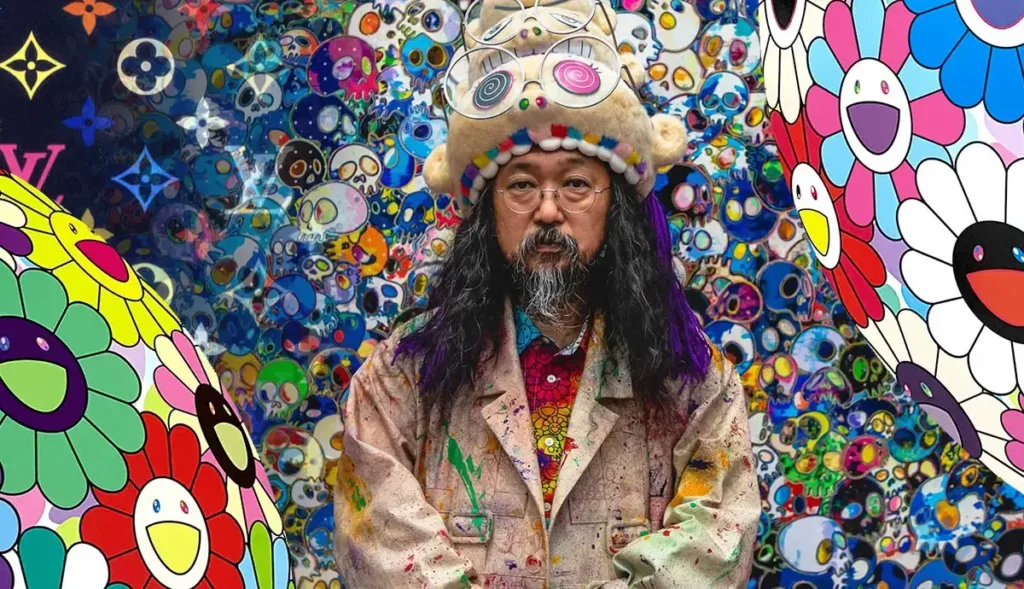
https://www.thecollector.com/takashi-murakami/ (Artwork by Japanese artist, Takashi Murakami)
- Born: February 1, 1962
- Nationality: Japanese
- Art Forms: Painting, Sculpture, Commercial Media
His work not only captivates art aficionados in galleries but also permeates the commercial realm with fashion collaborations and animation. By interlacing high art with consumer culture, Murakami dissolves the barriers that often segregate artistic realms.
Exhibitions have showcased Murakami’s mastery globally, with his complex narratives rendered in electric hues and enchanting characters that are immediately recognizable. These kaleidoscopic creations echo themes from Japan’s history interwoven with contemporary issues, forming a commentary that resonates on multiple levels.
Chiharu Shiota
As we explore the dynamic world of Japanese contemporary artists, the enchanting work of Chiharu Shiota stands out. She won international acclaim for her unique art installations, which often incorporate intricately woven webs of threads, capturing the complexities of human existence.
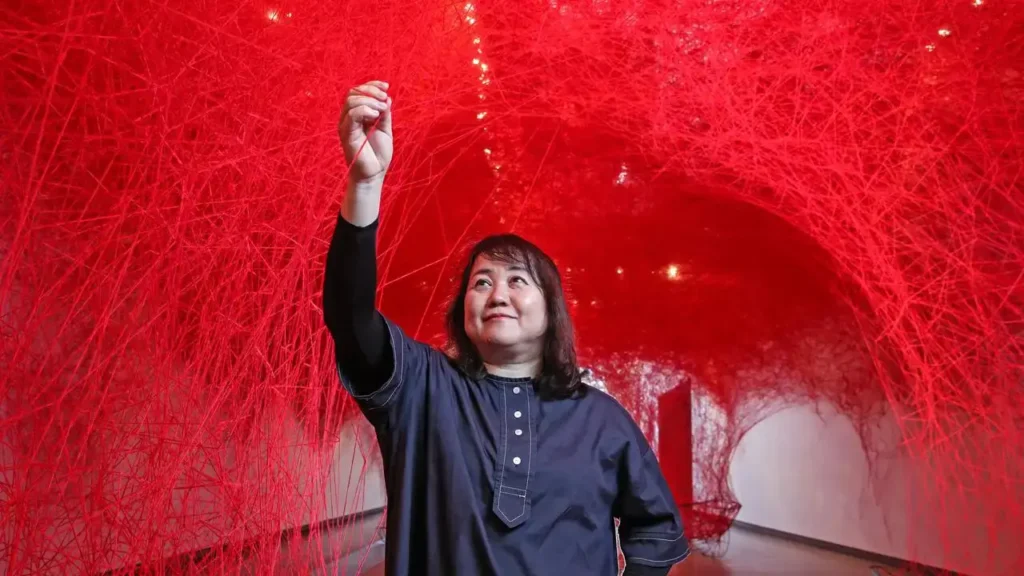
https://www.couriermail.com.au/subscribe/news/1/?
Early Life
Born in Osaka in 1972, Shiota’s journey in the arts led her to Berlin, where she currently resides and works. Her educational background includes a solid foundation from Kyoto Seika University, and significant exposure to diverse art forms during a semester exchange at the Canberra School of Art, Australian National University.
Artistic Style
- Medium: Primarily uses threads
- Themes: Explores life, death, and relationships
Shiota’s creations are vast thread installations encompassing objects and memorabilia, portraying existence in the absence. These artworks are not just visual spectacles but emotional landscapes that draw viewers into a deeper introspection of life’s interwoven tapestry.
Noteworthy Achievements
- 2015 Venice Biennale: Shiota represented Japan and further solidified her international presence
- The Soul Trembles Exhibition: A significant showcase at Queensland’s Qagoma
Shiota’s The Soul Trembles exhibition is a testimony to the sheer scale and emotional depth of her work, featuring over 100 pieces that navigate through the nuances of human emotions and connections.
Yoshitomo Nara
When we explore the vibrant field of Japanese contemporary artists, one name stands out for its unique blend of innocence and rebellion: Yoshitomo Nara. His work embodies a child-like simplicity paired with a deep undercurrent of emotional complexity.
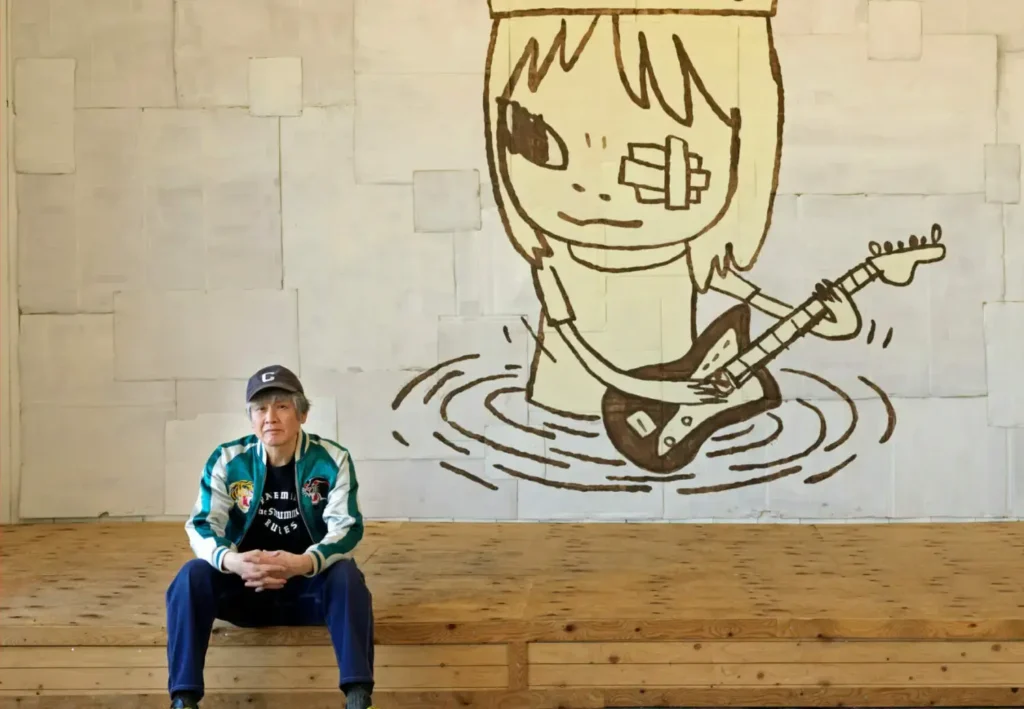
https://theskateroom.com/artists/yoshitomo-nara-skateboards
Born in 1959, Nara grew up in post-war Japan, a time that significantly influenced his artistic language. His pieces frequently feature wide-eyed children, sometimes accompanied by cryptic text or positioned against stark, monochromatic backgrounds. These figures, while appearing cute at first glance, often convey a sense of solitude and defiance, traits that resonate with the contemporary human experience.
| Notable Works | Year |
|---|---|
| Last Kamikaze | 1997 |
| Time of My Life series | 1992-2000 |
Nara’s style has a distinct connection with the Superflat movement, which merges pop culture and fine art. This movement was foundational in the rise of Japanese contemporary artists on the international stage. His association with Superflat is evident through his use of flat, two-dimensional spaces within his artwork, imbuing it with a graphic quality reminiscent of manga and anime.
While Nara’s work commands attention in galleries worldwide, his ethos is deeply personal. Each piece invites us to peer into our own childhood memories, offering a silent nod to the shared wells of emotions that we, as viewers, bring to his art.
Yasumasa Morimura
We’ve been captivated by the transformative art of the highly acclaimed Yasumasa Morimura, a trailblazer among Japanese contemporary artists. Morimura’s unique approach involves recontextualizing iconic images from Western art and pop culture, placing his own image into these historical scenes. This bold technique challenges notions of identity and culture, often with a dash of humor and a touch of the theatrical.
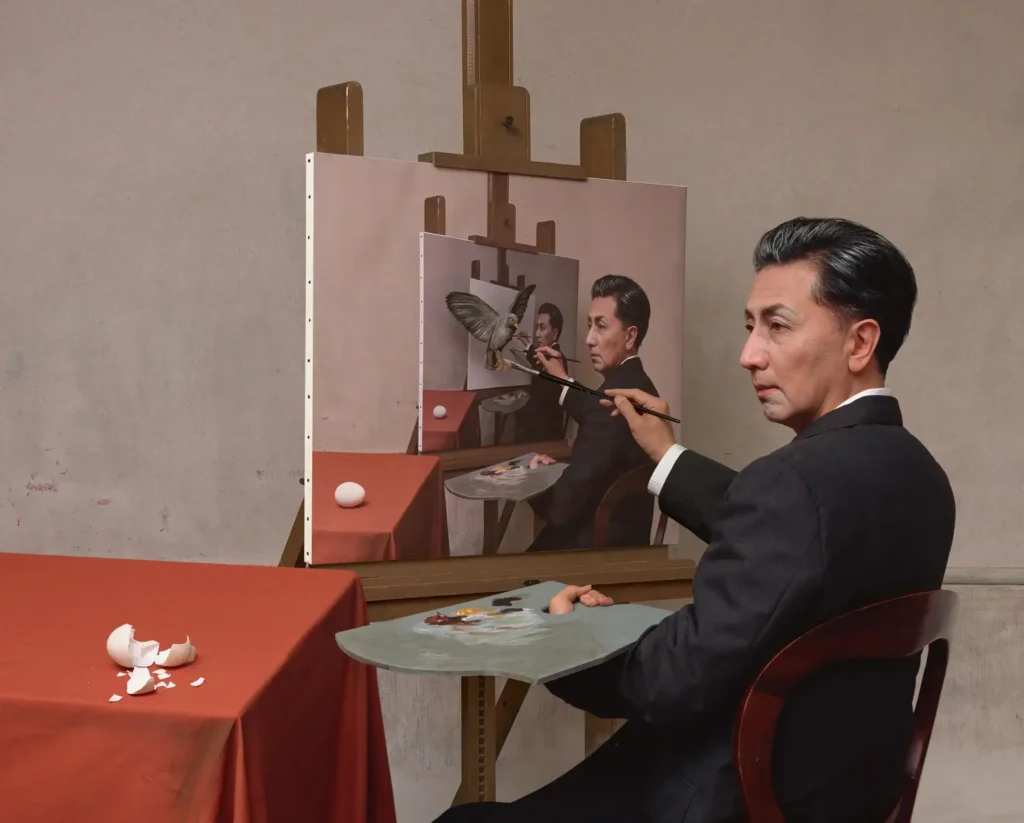
https://www.japantimes.co.jp/culture/2016/05/17/arts/many-portraits-artist-young-older-man/ (‘Magritte / Triple Personality’ (2016) from Yasumasa Morimura’s ‘Self-Portraits through Art History’ | COLLECTION OF THE ARTIST)
- Born: June 11, 1951
- Nationality: Japanese
- Mediums Used: Photography, Film, Performance Art
Throughout his career, Morimura has adeptly used costumes, makeup, and digital manipulation to recreate himself as a famous figure. By casting himself in roles such as Van Gogh or Marilyn Monroe, he delves into complex dialogues about gender, race, and the historical context of artistic expression.
Influential Works:
- “An Inner Dialogue with Frida Kahlo”
- “Portrait (Futago)”
His CV unfolds over decades, where he’s exhibited in prestigious venues, conveying compelling insights into societal conventions. Morimura’s art is not only a mirror reflecting our collective cultural landscape but also a lens magnifying the fluidity and constructed nature of personal and cultural identity.
Chiho Aoshima
As enthusiasts of Japanese contemporary artists, we’re constantly exploring the vibrant works of those who redefine creativity. Among these, Chiho Aoshima stands out with her enigmatic digital landscapes and dreamlike figures. Born in Tokyo, in 1974, Aoshima is a largely self-taught artist, a fact that only adds to the wonder of her fantastical art pieces.
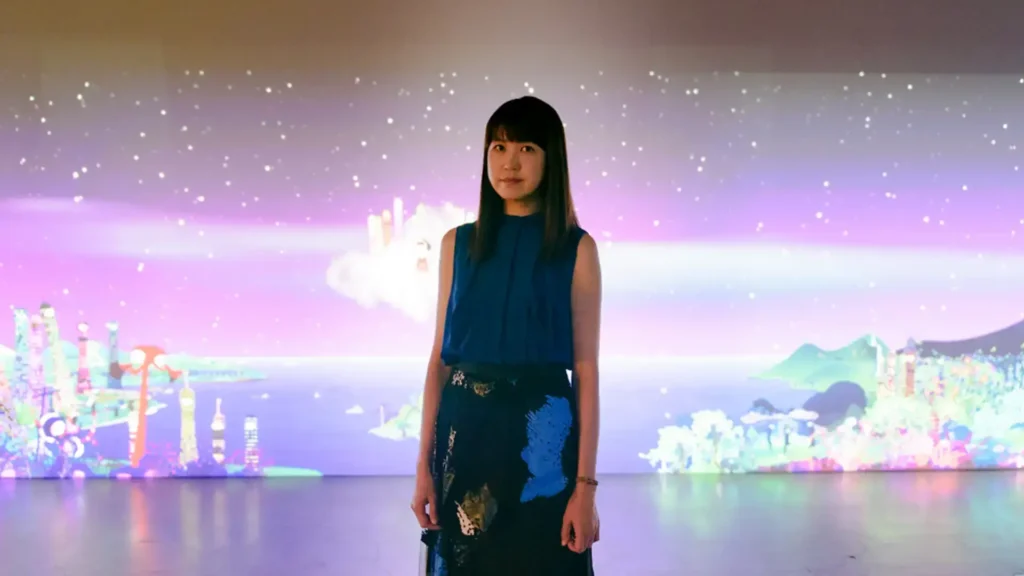
https://www.timeout.com/tokyo/art/interview-chiho-aoshima
Key Details:
- Born: 1974, Tokyo, Japan
- Education: Department of Economics, Hosei University
- Collective: Kaikai Kiki
Career and Style
Aoshima is renowned for her work with digital prints, animation, and her involvement with Kaikai Kiki, a creative collective led by the famous Takashi Murakami. Her art often features blendings of the natural and supernatural, with a clear nod to both Japanese pop culture and traditional themes. Aoshima’s striking visuals are birthed from computer software, showcasing her technical and imaginative prowess.
Artistic Media:
- Digital prints
- Animation
- Sculpture
- Murals
Notable Exhibitions
Aoshima’s international recognition spiked when featured in Superflat, an iconic exhibition curated by Murakami in 2001. Her works have since traveled the globe, making waves in the contemporary art scene and engaging audiences with their storybook-like allure.
Mariko Mori
When we explore the world of Japanese contemporary artists, Mariko Mori’s name stands out with her multidisciplinary approach that encompasses sculpture, photography, video, installation, and digital imagery. Born in 1967 in Tokyo, Mori has established herself as an artist who isn’t afraid to merge past and future, science, and spirituality.
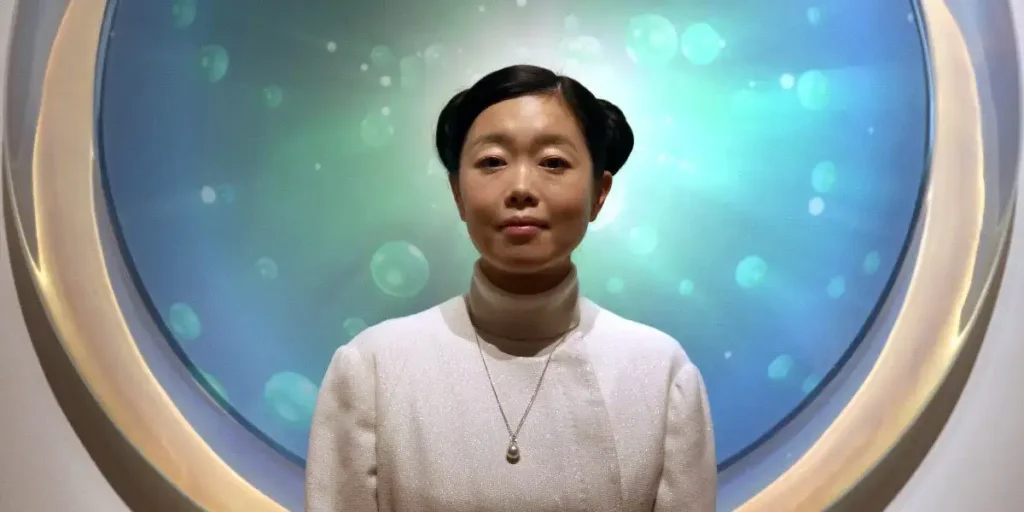
https://www.widewalls.ch/artists/mariko-mori
Education and Early Work
Mori’s artistic journey began with her studies in fashion design at the Bunka Fashion College in Tokyo, a background that infuses her art with a unique aesthetic dimension. She extended her craft at the Chelsea College of Art and Design in London before moving to New York to participate in the Whitney Museum’s Independent Study Program.
- Major Themes: Mori’s work frequently touches on technology and transcendence, weaving traditional Japanese motifs into futuristic narratives
- Notable Exhibitions: A highlight in her career was receiving the Menzione d’onore at the 47th Venice Biennale
- Awards: Her contributions have been recognized with awards including one from the Japan Cultural Arts Foundation
Mori’s pieces, such as “Nirvana,” reflect her profound exploration of existence and the cosmos, representing her as an iconic figure among Japanese contemporary artists. Whether you encounter her artwork in London, New York, or Tokyo, her imaginative vision remains consistent, portraying her hybridized future self in an array of mediums that continue to captivate and provoke thought.
Koki Tanaka
We’ve encountered numerous Japanese contemporary artists who bring unique perspectives to the global art scene, and Koki Tanaka stands out prominently among them. Born on December 6, 1975, Tanaka offers a fresh lens on recognizing the extraordinary within the mundane.
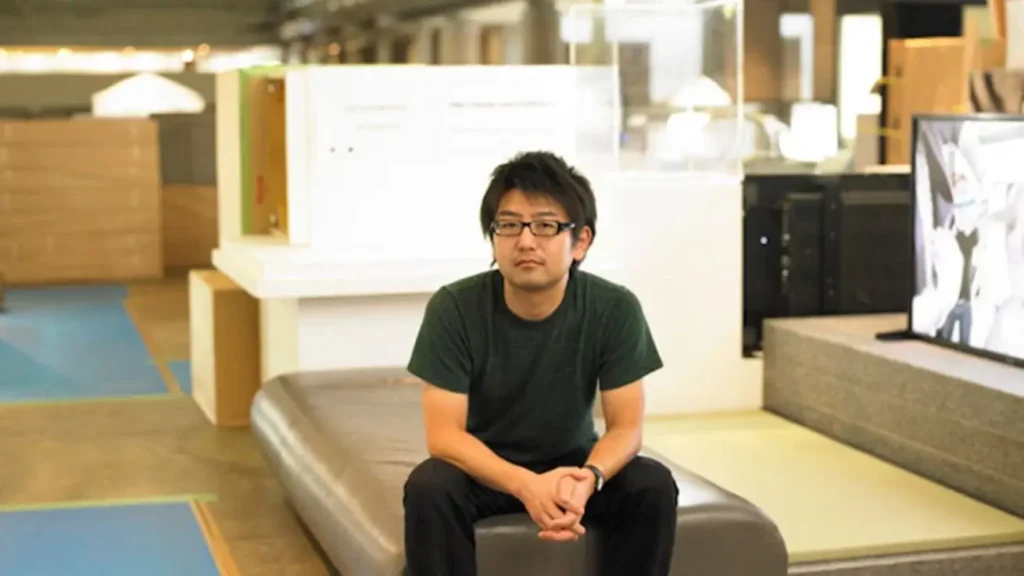
https://ocula.com/magazine/conversations/koki-tanaka/
Education & Achievements:
Tanaka’s education includes a tenure as a visiting scholar at Tokyo Zokei University. He received significant acclaim for representing Japan at the prestigious Venice Biennale in 2013, where the Japan Pavilion was given a Special Mention.
Artistic Style:
His Minimalist approach is evident in his intriguing takes on everyday commodities, transforming the familiar into something thought-provoking. Tanaka’s videos and installations often are developed site-specifically, engaging viewers to reconsider their interactions with the common objects and spaces around them.
Recent Works:
Tanaka’s conceptual reach extends to the behaviors of individuals in society. With projects such as “A Poem Written by 5 Poets at Once” and “A Pottery Produced by 5 Potters at Once,” he forges temporary creative collaborations, fostering a dialogue between viewers, the art, and its creators.
Public Engagement:
Tanaka’s work does more than fill gallery spaces; it invites participation and contemplation. His exhibitions often become a space where strangers collaborate, emphasizing art’s role in creating communal experiences.
For aficionados looking to delve deeper into Tanaka’s world, further insights and collections of his artwork can be found online, revealing an artist who constantly challenges us to find the unusual in our everyday lives.
Chikako Yamashiro
We can’t help but be drawn to the evocative work of Chikako Yamashiro, a name that resonates within the circles of Japanese contemporary artists. Born in 1976, her unique approach to artistry has positioned her as a dynamic figure in the landscape of modern visual arts in Japan. Through a blend of photography, video, and performance, Yamashiro gives us a window into the complex tapestry of Okinawa’s history, politics, and culture.
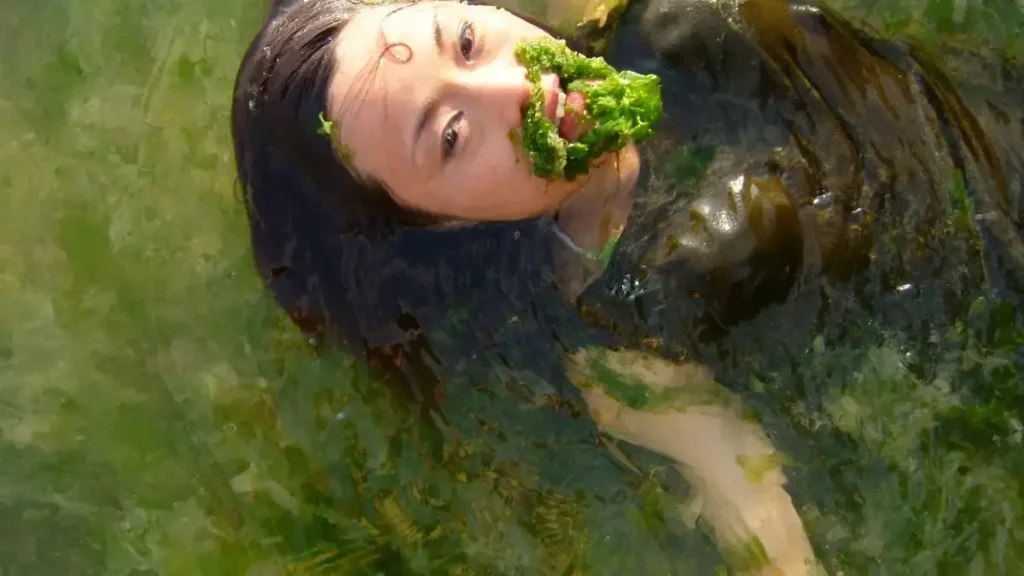
Chikako Yamashiro: Shapeshifter
Mediums and Themes:
- Photography: Exploring Okinawa’s landscapes and people
- Video Art: Addressing political narratives
- Performance: Investigating cultural expressions
Her pieces are not mere creations; they are visual investigations that challenge our perceptions. Yamashiro’s art extends beyond aesthetic value, delving into the roles of memory and heritage in shaping community identity. Through her art, we confront the nuanced and often overlooked narratives that have shaped Okinawa.
Notable Works and Exhibitions:
- Mud Man (2016): A significant 26-minute video piece exhibited at Honolulu Museum of Art
- International Participation: Showcased in the Istanbul Biennial and other global art forums
Yamashiro’s honors include winning the Asian Art Award in 2017, highlighting her contribution to the field and her role in bringing Japanese contemporary art to a broader audience. Her work continues to inspire us, exploring the depths of Okinawan society and challenging the collective memory of Japanese and American occupations.
FAQ
Who is the most famous modern Japanese artist?
The most famous modern Japanese artist is likely Takashi Murakami, known for his vibrant anime-inspired aesthetic and collaborations across fashion and art.
Who are the Japanese artists alive today?
Some contemporary Japanese artists alive today include Yayoi Kusama and Takashi Murakami.
What is Japanese contemporary art?
Japanese contemporary art is a dynamic and diverse blend of styles and mediums, ranging from traditional techniques to modern expressions like the ‘superflat’ movement.
Who is the most successful living artist?
The most successful living artist can be subjective, but in terms of record-breaking sales, Jeff Koons holds the record for the most expensive work sold by a living artist with his sculpture, “Rabbit”, selling for $91 million.
Thank you for reading our blog post on “Japanese Contemporary Artists.” We would love to hear your feedback and personal stories related to this topic. Please leave a comment below to join the conversation. We’re looking forward to your input!
If you want to keep reading more from us, have a look at these articles.

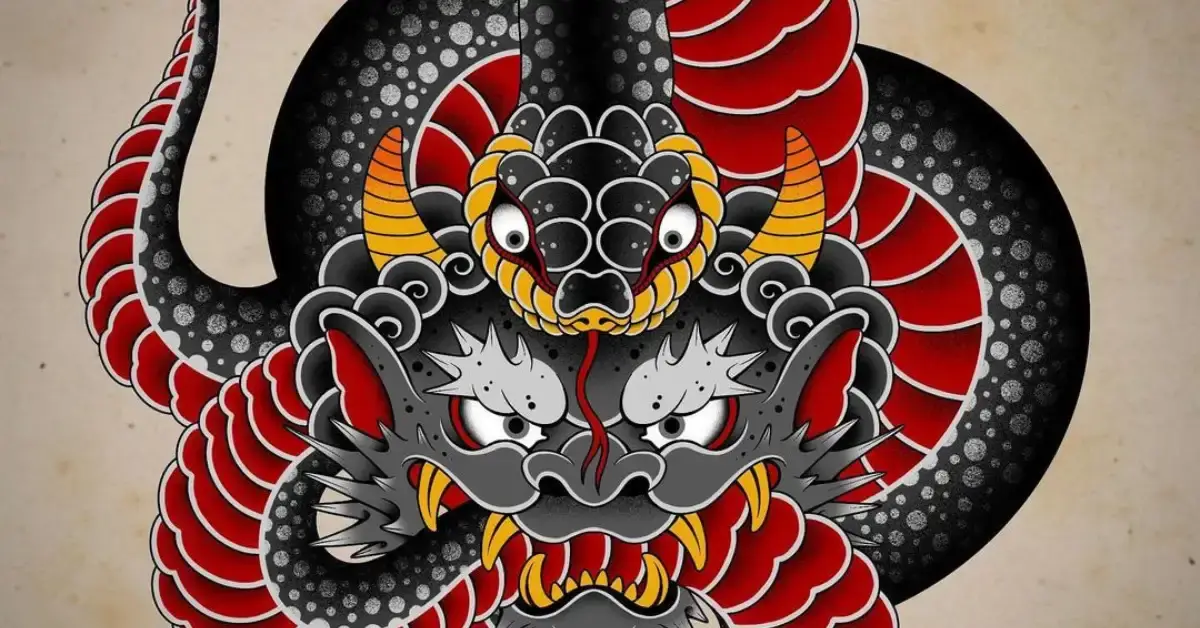

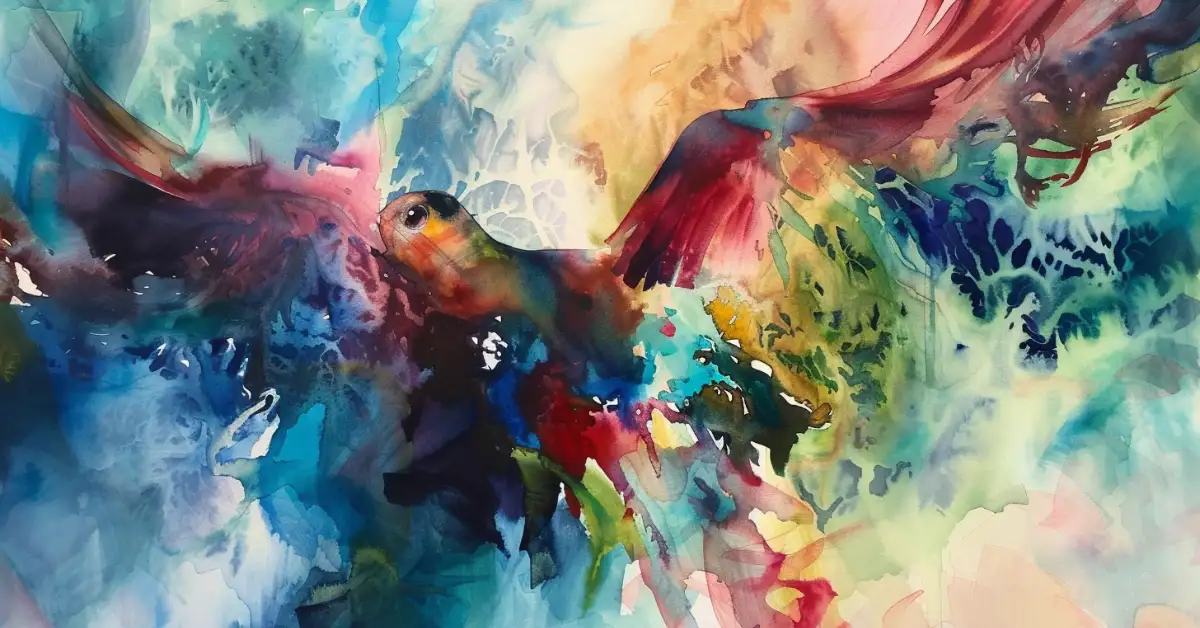

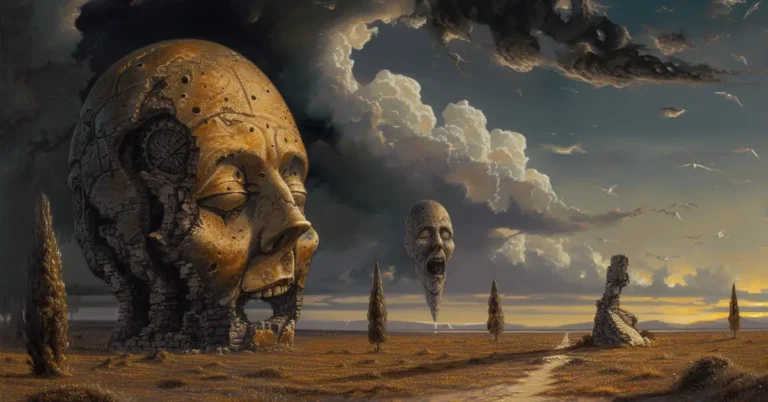

Wow Thanks for this page i find it hard to find beneficial knowledge out there when it comes to this content appreciate for the site website
Wow Thanks for this site i find it hard to obtain very good important information out there when it comes to this content appreciate for the information website
nice blog mate.. amazing content.. this one i search for. thank you